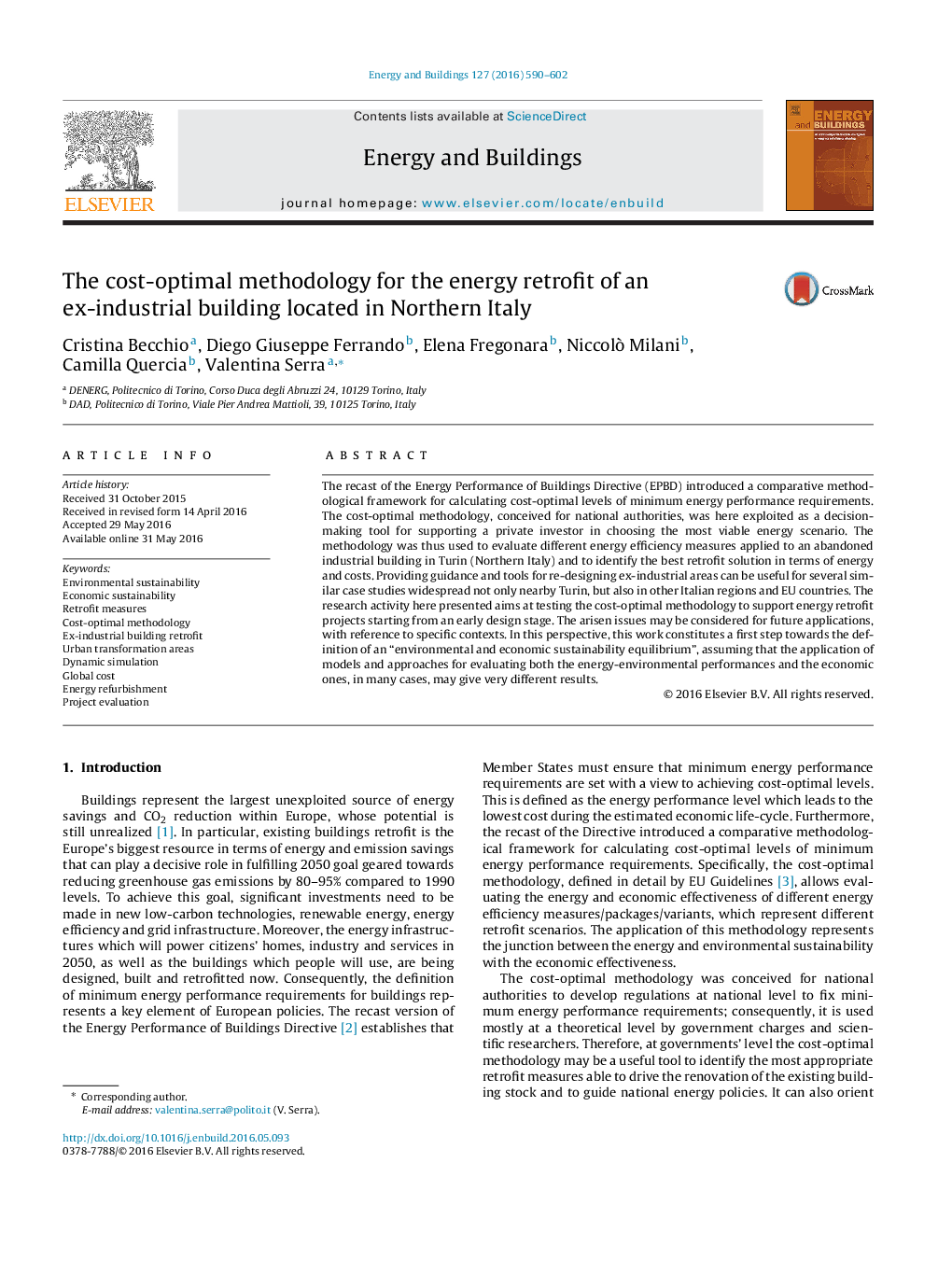| Article ID | Journal | Published Year | Pages | File Type |
|---|---|---|---|---|
| 262009 | Energy and Buildings | 2016 | 13 Pages |
•The cost-optimal methodology is here tested as a tool for evaluating energy retrofit projects.•The methodology is applied to an ex-industrial building submitted to energy retrofit.•A concrete synergy between energy and economic effectiveness issues is here achieved.•A harmonization of databases differently implemented is made.•The methodology has the potential to constitute a tool to target retrofit policy measures for both public and private investors.
The recast of the Energy Performance of Buildings Directive (EPBD) introduced a comparative methodological framework for calculating cost-optimal levels of minimum energy performance requirements. The cost-optimal methodology, conceived for national authorities, was here exploited as a decision-making tool for supporting a private investor in choosing the most viable energy scenario. The methodology was thus used to evaluate different energy efficiency measures applied to an abandoned industrial building in Turin (Northern Italy) and to identify the best retrofit solution in terms of energy and costs. Providing guidance and tools for re-designing ex-industrial areas can be useful for several similar case studies widespread not only nearby Turin, but also in other Italian regions and EU countries. The research activity here presented aims at testing the cost-optimal methodology to support energy retrofit projects starting from an early design stage. The arisen issues may be considered for future applications, with reference to specific contexts. In this perspective, this work constitutes a first step towards the definition of an “environmental and economic sustainability equilibrium”, assuming that the application of models and approaches for evaluating both the energy-environmental performances and the economic ones, in many cases, may give very different results.
